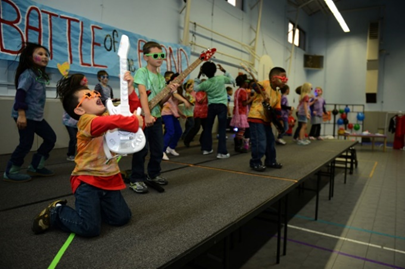16.2: Introducing the Framework

Children’s lives are characterized by belonging, being and becoming.
- Experiencing belonging – knowing where and with whom you belong – is integral to human existence. In school-age care, and throughout life, relationships are crucial to a sense of belonging. Children belong first to a family, a cultural group, a neighborhood and a wider community. Belonging acknowledges children’s interdependence with others and the basis of relationships in defining identities. Belonging is central to being and becoming in that it shapes who children are and who they can become.
- Childhood is a time to be, to seek and make meaning of the world. Being recognizes the significance of the here and now in children’s lives. It is about the present and them knowing themselves, building and maintaining relationships with others, engaging with life’s joys and complexities, and meeting challenges in everyday life. During the school-age years, children develop their interests and explore possibilities. School-age care settings give children time and place to collaborate with educators to organize activities and opportunities meaningful to them.
- Children’s identities, knowledge, understandings, capacities, skills and relationships change during childhood. They are shaped by many different events and circumstances. Becoming acknowledges children’s ongoing learning and development. It emphasizes learning to participate fully and actively in society.

There are five desired outcomes for children (these are covered more later in the chapter):
- Children have a strong sense of identity
- Children are connected with and contribute to their world
- Children have a strong sense of well-being
- Children are confident and involved learners
- Children are effective communicators
Children’s well-being and learning is at the core of the framework and comprises three interrelated elements: Principles, Practice, and Outcomes.
All three elements are fundamental to pedagogy and program decision-making in school-age care. A school-age care program encompasses all the interactions, experiences, routines and events, planned and unplanned, which occur in an environment designed to support well-being and foster children’s learning and development. The emphasis is on the planned or intentional aspects of the program, which includes supporting spontaneous play and recreational experiences initiated by children.
Children are receptive to a wide range of experiences. What is included or excluded from the program affects how children learn, develop and understand the world.
Working in collaboration with children and in partnership with families, educators use the outcomes to guide their planning for children’s well-being and learning. In order to engage children actively in learning, educators identify children’s strengths and interests, choose appropriate strategies and design the environments. Program decision-making should be an ongoing cycle. This involves educators drawing on their professional knowledge, including their in-depth knowledge of children. In collaboration with children and families, educators carefully evaluate to inform further planning.

